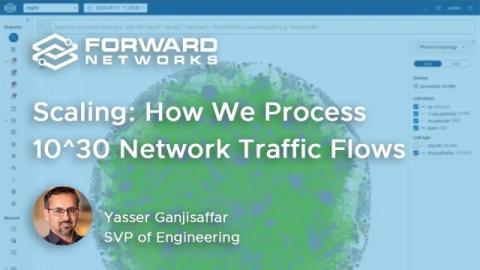Security | Threat Detection | Cyberattacks | DevSecOps | Compliance
%term
The Age of AI-Powered Scams | The 443 Podcast
This week on the podcast, Marc Laliberte and Corey Nachreiner dive into a research white paper that explores how attackers could use AI to execute a full-scale money or credential theft scam from start to finish. Before that, they discuss Sophos's five-year battle with Chinese hackers targeting network devices, followed by a conversation about Microsoft’s ongoing fight against password spray attacks through compromised network devices.
Your AppSec Journey Demystified: Driving Effective API Security with Wallarm and StackHawk
There is no doubt that attackers have shifted their attention to APIs. Wallarm’s API ThreatStats research identifies that 70% of attacks now target APIs instead of Web Applications. While APIs have become the backbone of innovation and connectivity for businesses, they have also introduced a vast attack surface that’s challenging to defend with traditional methods alone.
Is the ASX 200 Resilient to Cyber Threats? Our Report Says No.
In today’s rapidly evolving digital landscape, managing cyber risk has become essential for sustaining corporate growth and resilience. Cyber risk management requires balancing corporate growth against the evolving tactics of threat actors and governmental regulations – a daunting task that requires continuous measurement and strategic reflection.
OT Security Challenges and Solutions for Critical Infrastructure Protection
Critical infrastructure systems, such as power plants, water treatment plants, transportation networks, and factories, depend on operational technology (OT) to work. OT systems are meant to handle physical devices and processes, while traditional IT systems are mostly concerned with keeping data and information safe. Because of this main difference, OT security is very hard, especially since OT networks are becoming more and more linked to IT networks, which makes them more open to cyber dangers.
Scaling: How We Process 10^30 Network Traffic Flows
Forward Networks ensures that the world's most complex and mission-critical networks are secure, agile, and reliable. A mathematical model of the network, including computations of all possible traffic paths, is built by collecting configuration data and L2-L7 states from networking devices and public cloud platforms.
Snyk named a Customer Favorite in The Forrester Wave: Software Composition Analysis Software, Q4 2024 Report
Snyk is proud to announce that our developer security platform has been recognized as a Leader in The Forrester Wave: Software Composition Analysis (SCA) Software, Q4 2024 report. In this evaluation, we were one of just three Leaders and were named a Customer Favorite.
Fortifying Defenses Against AI-Powered OSINT Cyber Attacks
In the ever-evolving landscape of cybersecurity, the convergence of Artificial Intelligence (AI) and Open-Source Intelligence (OSINT) has created new opportunities for risk. It is crucial to understand that this powerful combination is also being weaponized by cybercriminals, presenting unprecedented challenges for organizations worldwide.
Criminal Threat Actor Uses Stolen Invoices to Distribute Malware
Researchers at IBM X-Force are tracking a phishing campaign by the criminal threat actor “Hive0145” that’s using stolen invoice notifications to trick users into installing malware. Hive0145 acts as an initial access broker, selling access to compromised organizations to other threat actors who then carry out additional cyberattacks.
Money 20/20 Marks Major Inflection Point in Stablecoin Utility
This year’s Money 20/20 event brought industry leaders together to discuss the latest in payments and fintech. Many conversations at the event underscored certain key trends that are rapidly shaping the payments landscape. The shift in the types of conversations around stablecoins happening today is undeniable – the question has moved beyond “Why stablecoins?” to “How do we do this today?” Here are three major takeaways from this year’s event.











